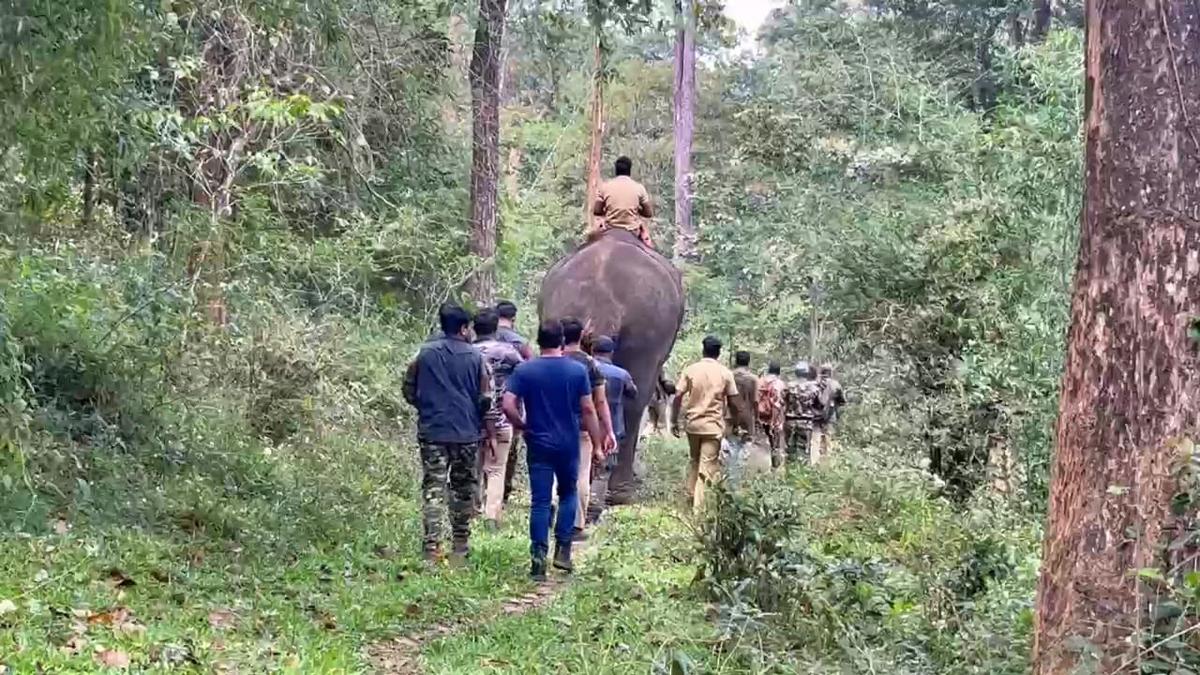
Special team intensifies combing operation for elusive tiger in Wayanad
The Hindu
Special team intensifies combing operations to capture elusive man-eating tiger in Wayanad.
The newly constituted 80 member special team intensified combing operations on Thursday to capture elusive tiger in Wayanad that is suspected to have killed a farmer at Koodallur in the district a few days ago.
The big cat, nearly 13 year old, was identified as WWL-45, a resident of the Wayanad Wildlife Sanctuary as per the data base of the Forest Department.
The team consisted of trackers, shooters, veterinarians and members of the Rapid Response team mobilised from the three forest divisions in the district, searched the human habitats of the Kodallur and Moodakkolly areas bordering the Irulam forest of the South Wayanad forest division and Wayanad wildlife sanctuary, yielded no results so far .
Apart from the special team, two Kumkis (trained elephants), Vikram and Bharat, were pressed into service to locate the tiger.
Sub Collector Vishal Sagar Bharath on Thursday issued an order to extend the prohibitory orders under Section 144 of the Cr.PC in the 11th ward of the Poothadi grama panchayat till December 19 as part of the smooth functioning of the operation. The order issued by Mr. Bharath, who is also the sub-divisional Magistrate, came shortly before the previous order that had come into effect on December 11 was set to expire on Thursday midnight.
The Big cat reached one of the cages set up near a poultry farm at Koodallur on Wednesday night but, the animal did not enter the cage and instead roamed near these, Forest Department sources said. However, the pug marks of the tiger was identified from the site, the sources said.
Forest Minister A.K. Saseendran on Thursday said the Chief Wildlife Warden had issued an order to shoot dead the tiger after it was identified as a man-eater. As many as five patrolling teams were also constituted to watch the movements of the tiger apart from 25 surveillance cameras installed in the area for the purpose, the Minister added. He also requested cooperation of the public for smooth functioning of the operation.

Hampi, the UNESCO-recognised historical site, was the capital of the Vijayanagara empire from 1336 to 1565. Foreign travellers from Persia, Europe and other parts of the world have chronicled the wealth of the place and the unique cultural mores of this kingdom built on the banks of the Tungabhadra river. There are fine descriptions to be found of its temples, farms, markets and trading links, remnants of which one can see in the ruins now. The Literature, architecture of this era continue inspire awe.

Unfurling the zine handed to us at the start of the walk, we use brightly-coloured markers to draw squiggly cables across the page, starting from a sepia-toned vintage photograph of the telegraph office. Iz, who goes by the pronouns they/them, explains, “This building is still standing, though it shut down in 2013,” they say, pointing out that telegraphy, which started in Bengaluru in 1854, was an instrument of colonial power and control. “The British colonised lands via telegraph cables, something known as the All Red Line.”

The festival in Bengaluru is happening at various locations, including ATREE in Jakkur, Bangalore Creative Circus in Yeshwantpur, Courtyard Koota in Kengeri, and Medai the Stage in Koramangala. The festival will also take place in various cities across Karnataka including Tumakuru, Ramanagara, Mandya, Kolar, Chikkaballapura, Hassan, Chitradurga, Davangere, Chamarajanagar and Mysuru.








